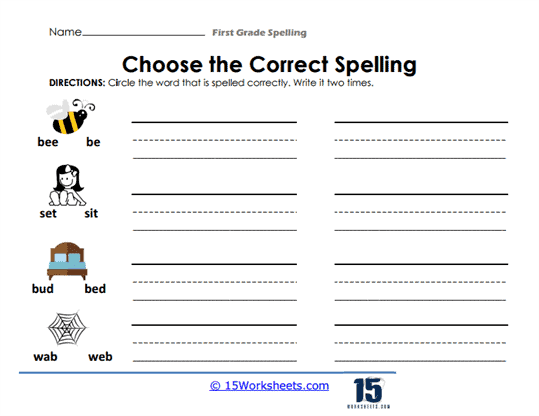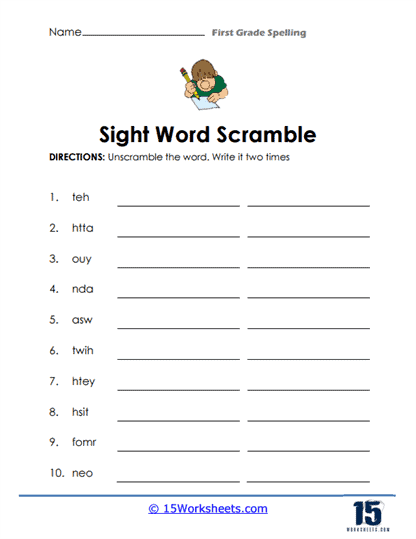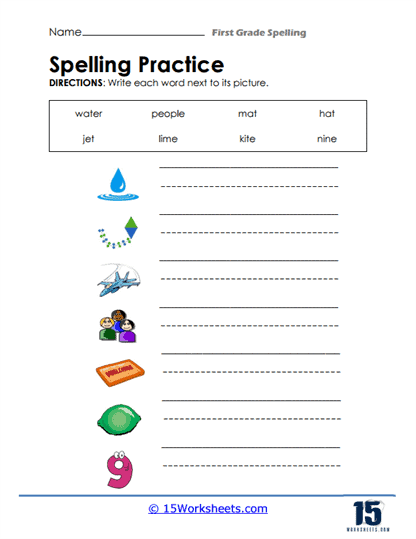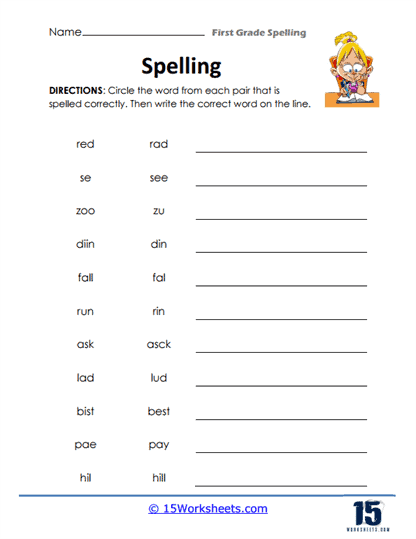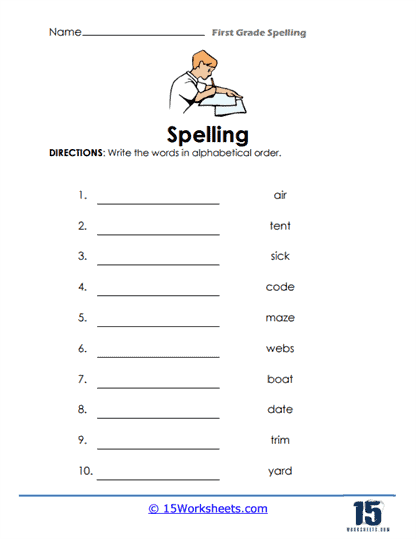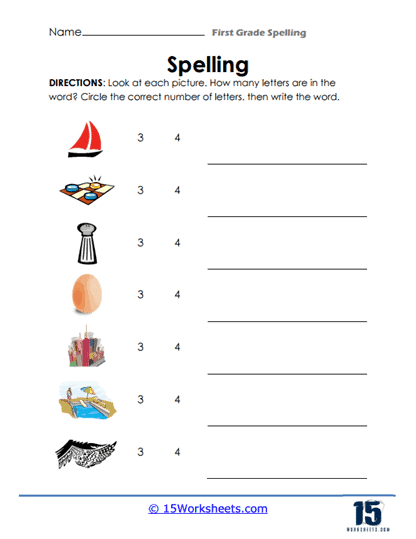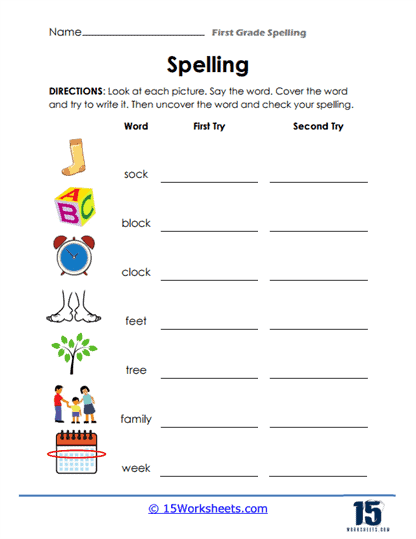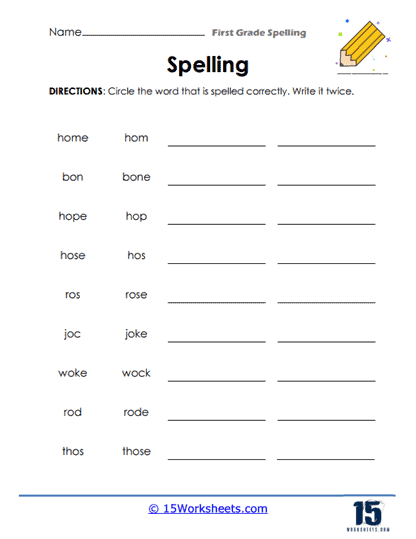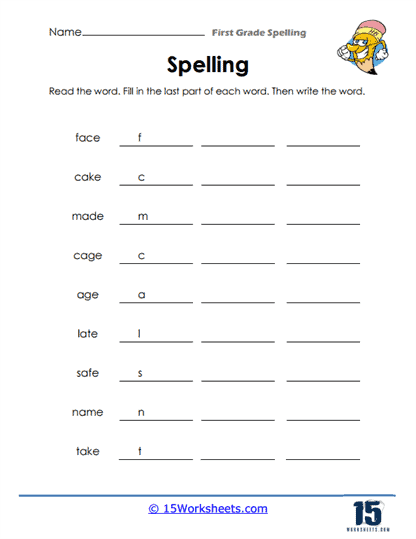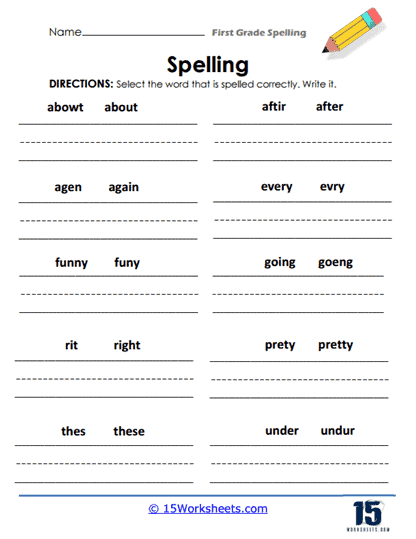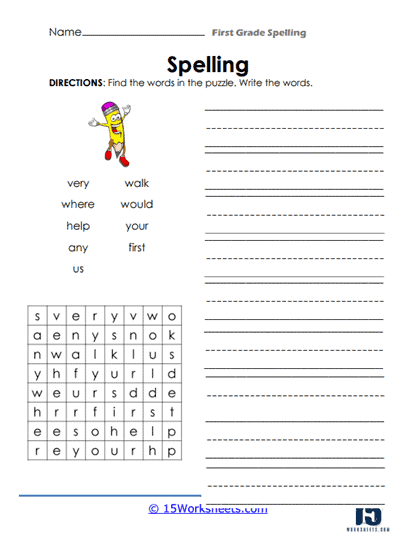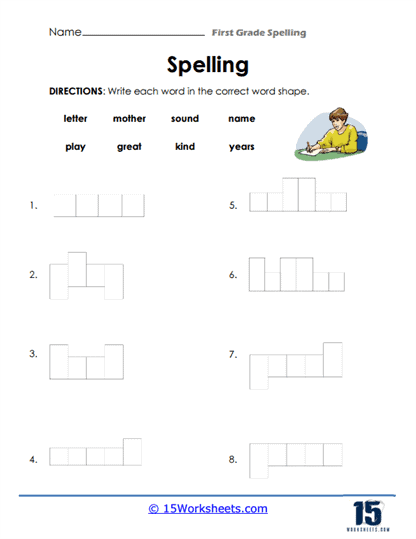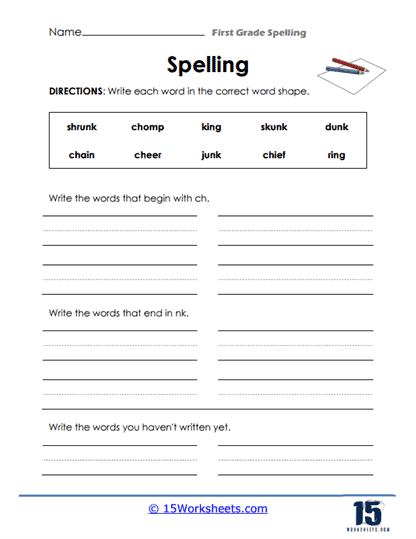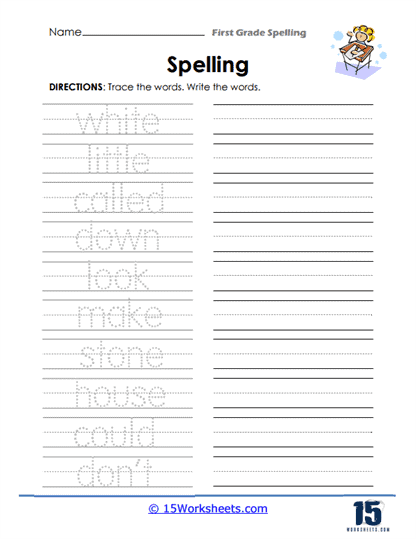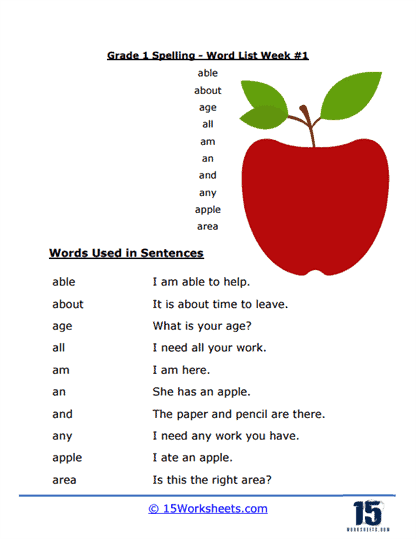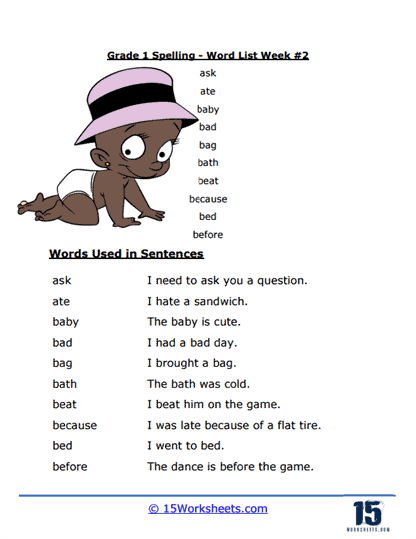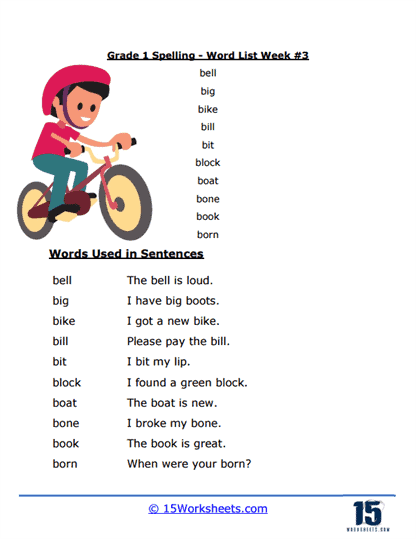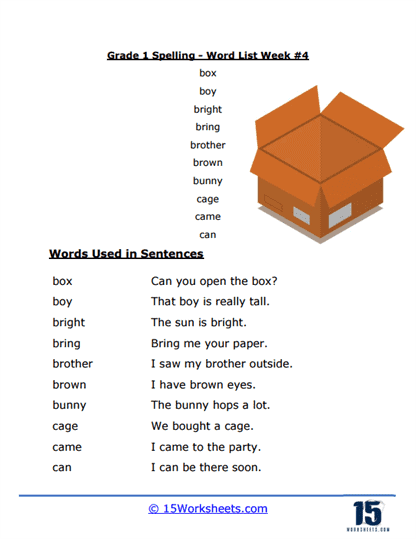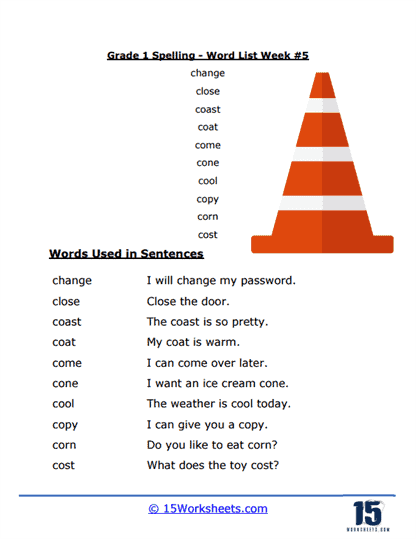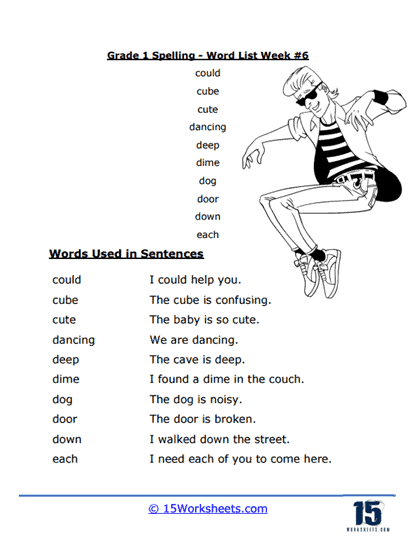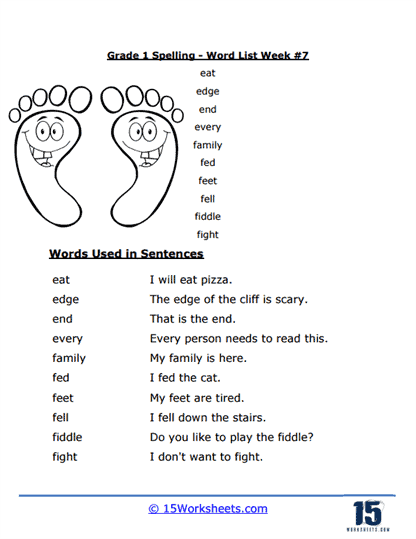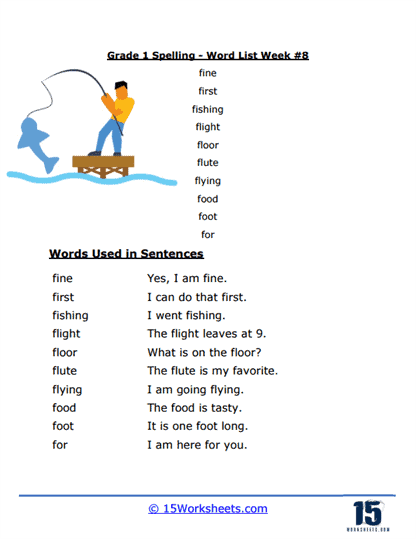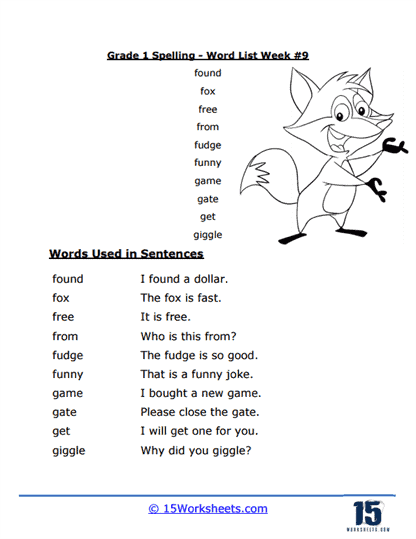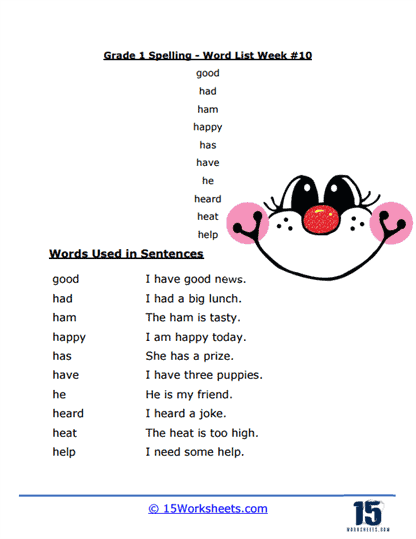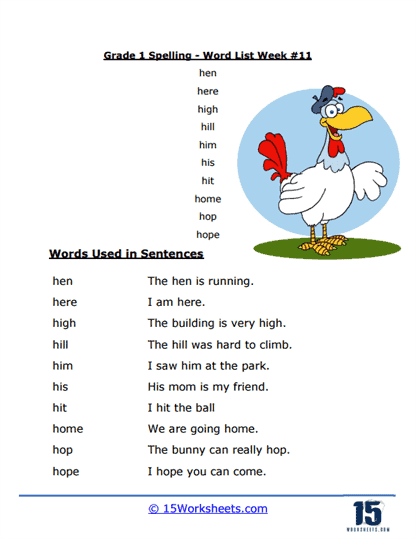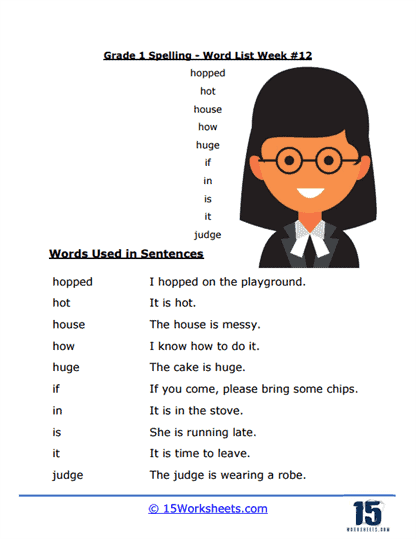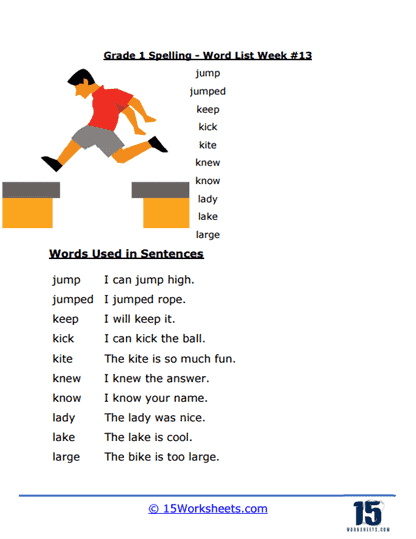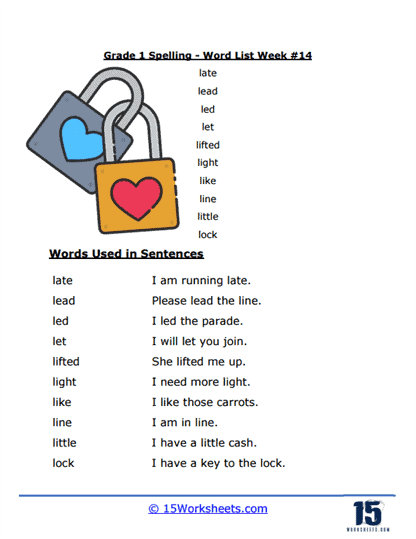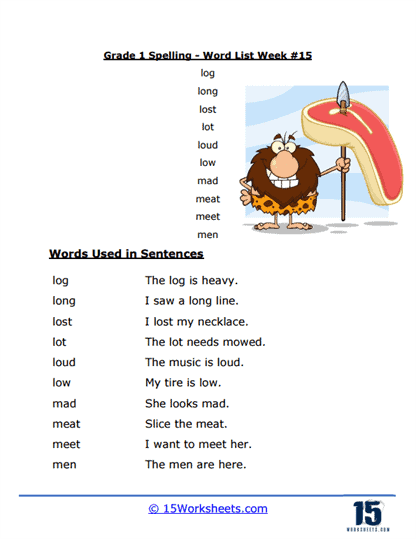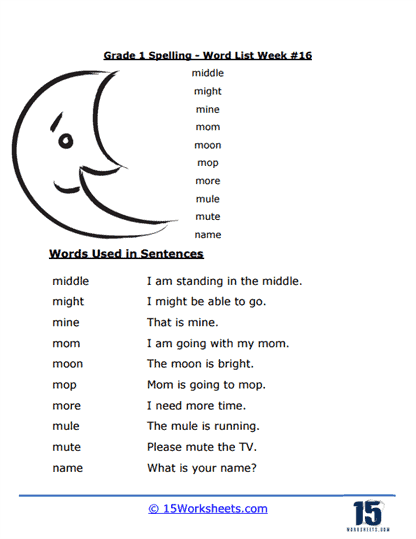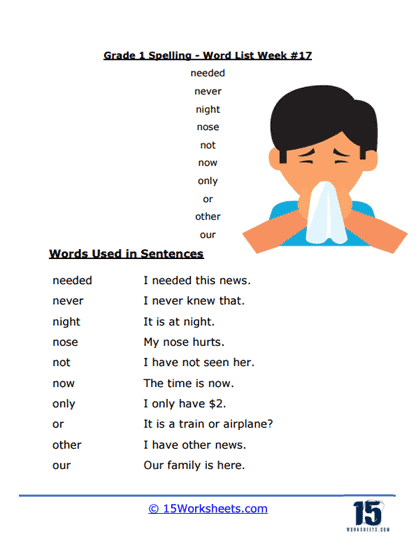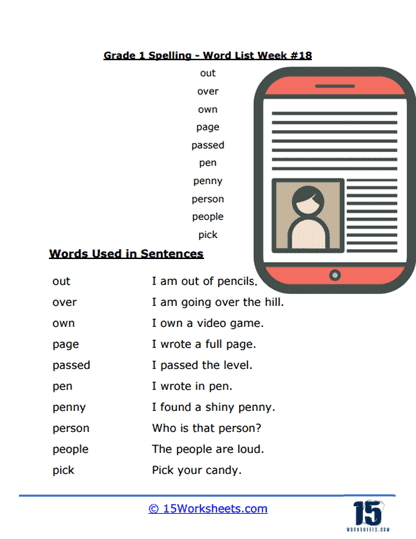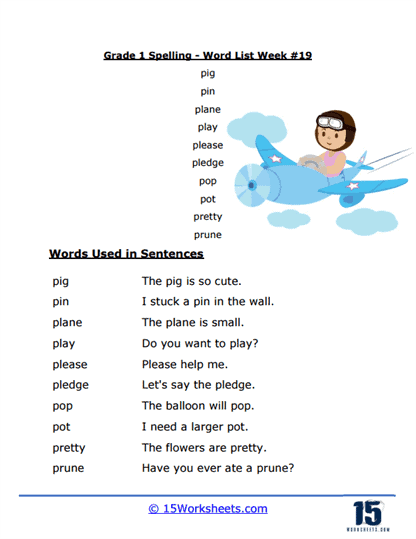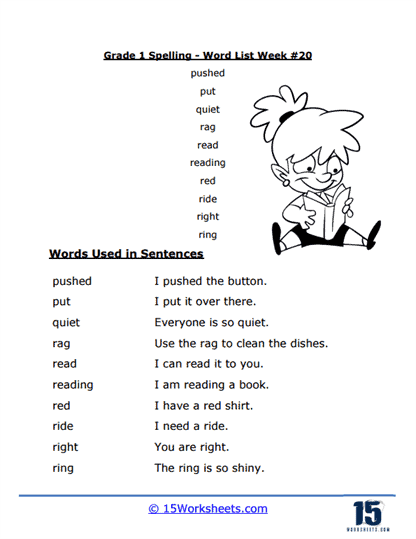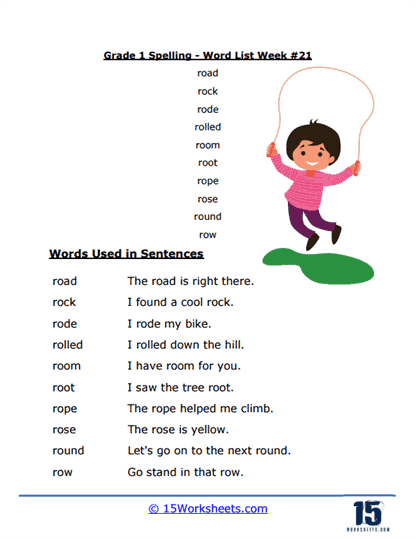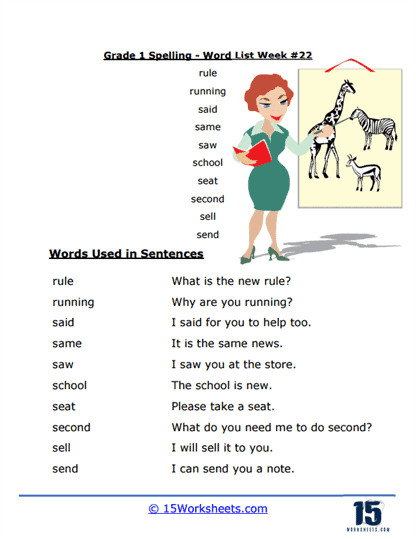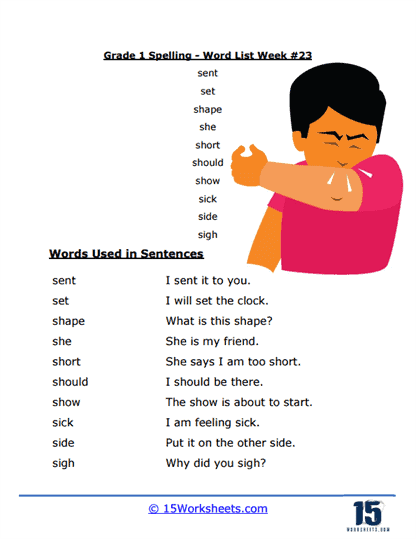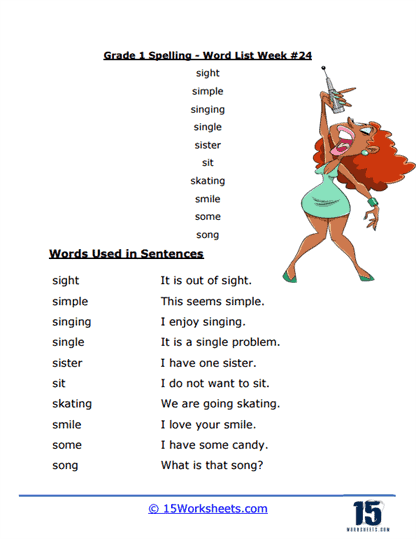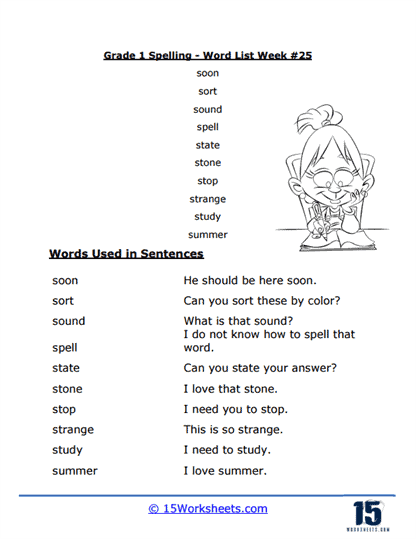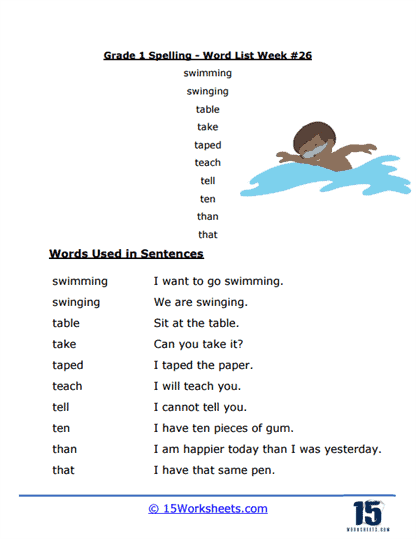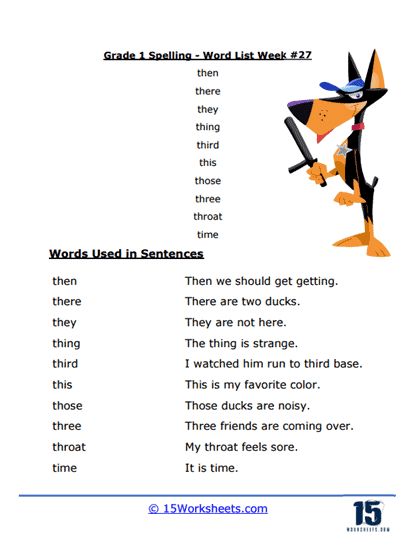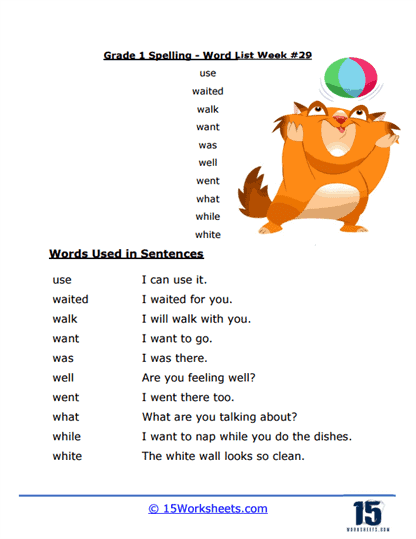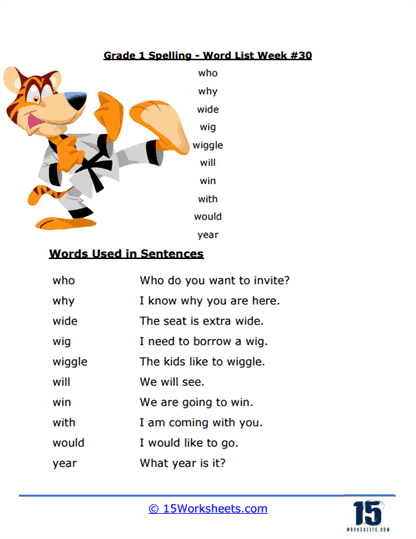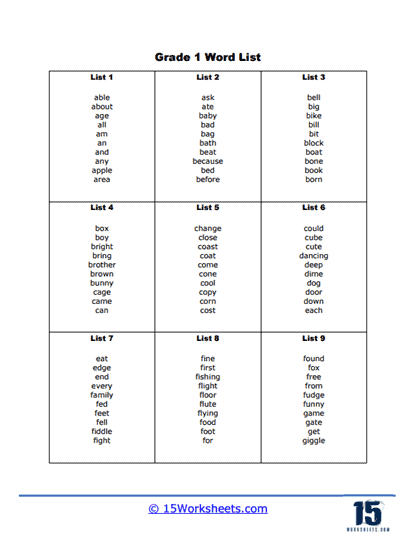1st Grade Spelling Words Worksheets
All About These 1st Grade Spelling Words Worksheets
This collection of 1st Grade Spelling Words Worksheets are educational resources designed to help first-grade students practice and improve their spelling skills. These worksheets usually feature a list of age-appropriate words that are commonly taught in first-grade curriculums. The worksheets can include various activities and exercises that focus on recognizing, writing, and using the words in context.
Some common types of activities found in 1st Grade Spelling Words Worksheets are:
- Word Tracing – Students practice writing the words by tracing over the letters.
- Word Search Puzzles – Students search for the spelling words hidden in a grid of letters.
- Fill in the Blanks – Students complete sentences by filling in the missing words.
- Word Scrambles – Students unscramble mixed-up letters to form the correct spelling words.
- Rhyming Words – Students identify words that rhyme with the given spelling words.
- Word Sorting – Students categorize words based on their spelling patterns or sounds.
- Alphabetical Order – Students arrange words in alphabetical order.
These worksheets aim to reinforce spelling skills, improve word recognition, and build vocabulary, helping first-grade students become more confident and proficient readers and writers. Teachers and parents can use these worksheets as supplementary material to complement classroom instruction or as a tool for practicing spelling at home.
What Are the Most Common 100 Spelling Words For 1st Graders?
Here’s a list of 101 common spelling words for 1st graders. These words are a mix of sight words and simple phonetic words that are suitable for young learners:
1. the
2. and
3. to
4. you
5. of
6. a
7. in
8. is
9. that
10. it
11. for
12. was
13. on
14. are
15. as
16. with
17. his
18. they
19. at
20. be
21. this
22. from
23. I
24. have
25. or
26. by
27. one
28. had
29. not
30. but
31. what
32. all
33. were
34. we
35. when
36. your
37. can
38. said
39. there
40. use
41. an
42. each
43. which
44. she
45. do
46. how
47. their
48. if
49. will
50. up
51. other
52. about
53. out
54. many
55. then
56. them
57. these
58. so
59. some
60. her
61. would
62. make
63. like
64. him
65. into
66. time
67. has
68. look
69. two
70. more
71. write
72. go
73. see
74. number
75. no
76. way
77. could
78. people
79. my
80. than
81. first
82. water
83. been
84. called
85. who
86. am
87. its
88. now
89. find
90. long
91. down
92. day
93. did
94. get
95. come
96. made
97. may
98. part
99. over
100. new
101. other
These words serve as a foundation for 1st graders’ spelling and reading skills. As students progress, you can introduce more complex words and spelling patterns. It’s important to remember that each child learns at their own pace, so adjust the list as needed to suit their individual learning needs.
How to Teach 1st Graders Spelling?
Teaching 1st graders spelling can be a fun and engaging process. Here are some strategies to help you effectively teach spelling to young learners:
Start with the Basics
Begin by teaching the alphabet and the sounds each letter makes. Use visual aids like flashcards, charts, or posters to help students associate the letters with their sounds.
Introduce Sight Words
Sight words are common words that children should learn to recognize by sight. Begin with simple, frequently used words and gradually add more complex words as students progress.
Use Phonics
Teach students to break down words into their individual sounds (phonemes) and blend these sounds to form words. Start with simple CVC (consonant-vowel-consonant) words and gradually introduce more complex patterns.
Practice Spelling Patterns
Teach common spelling patterns and rules, such as word families (e.g., -at, -an, -ig), plurals, and silent letters. Encourage students to identify and practice these patterns in various words.
Engage in Multisensory Activities
Use various activities that engage multiple senses, like writing words in sand, using letter magnets or tiles, or drawing words in the air. These activities can help reinforce learning and make spelling more enjoyable.
Encourage Reading
Reading helps develop vocabulary, comprehension, and spelling skills. Read aloud to students regularly and provide opportunities for independent reading.
Play Spelling Games
Make learning fun by incorporating spelling games, such as word hunts, spelling bees, or word-building puzzles. These activities can help students build their spelling skills in an engaging way.
Offer Personalized Practice
Tailor spelling practice to each student’s needs and progress. Provide individualized word lists, worksheets, or activities to reinforce their learning.
Use Technology
Incorporate educational apps, websites, or software that focus on spelling to help students practice in a more interactive way.
Be Patient and Consistent
Spelling can be challenging for young learners, so it’s important to be patient and consistent in your approach. Praise their efforts and provide constructive feedback to help them improve.
Remember, every child learns at their own pace, so it’s important to monitor their progress and adjust your teaching strategies as needed.

